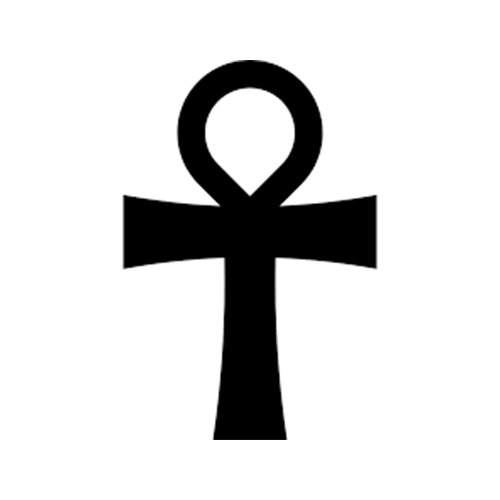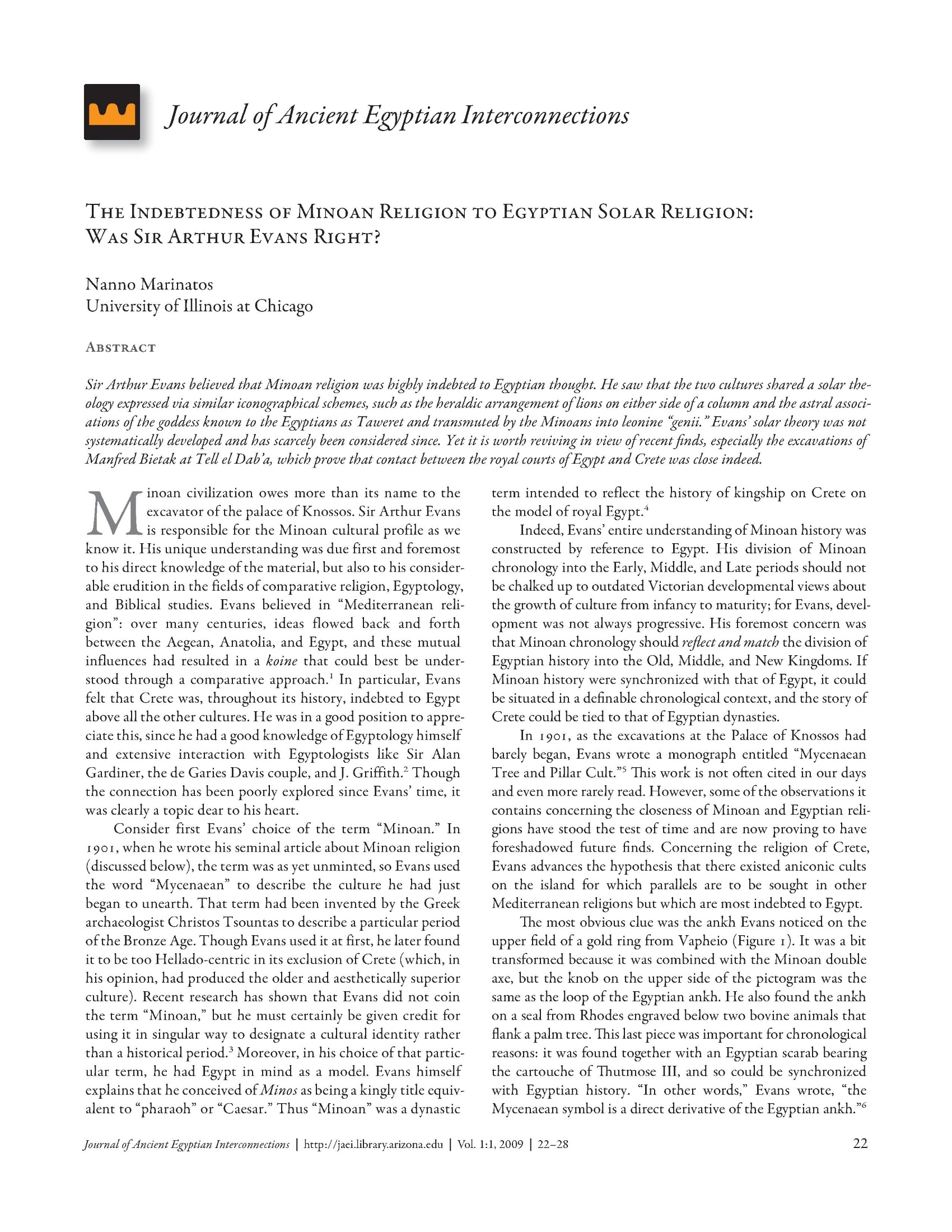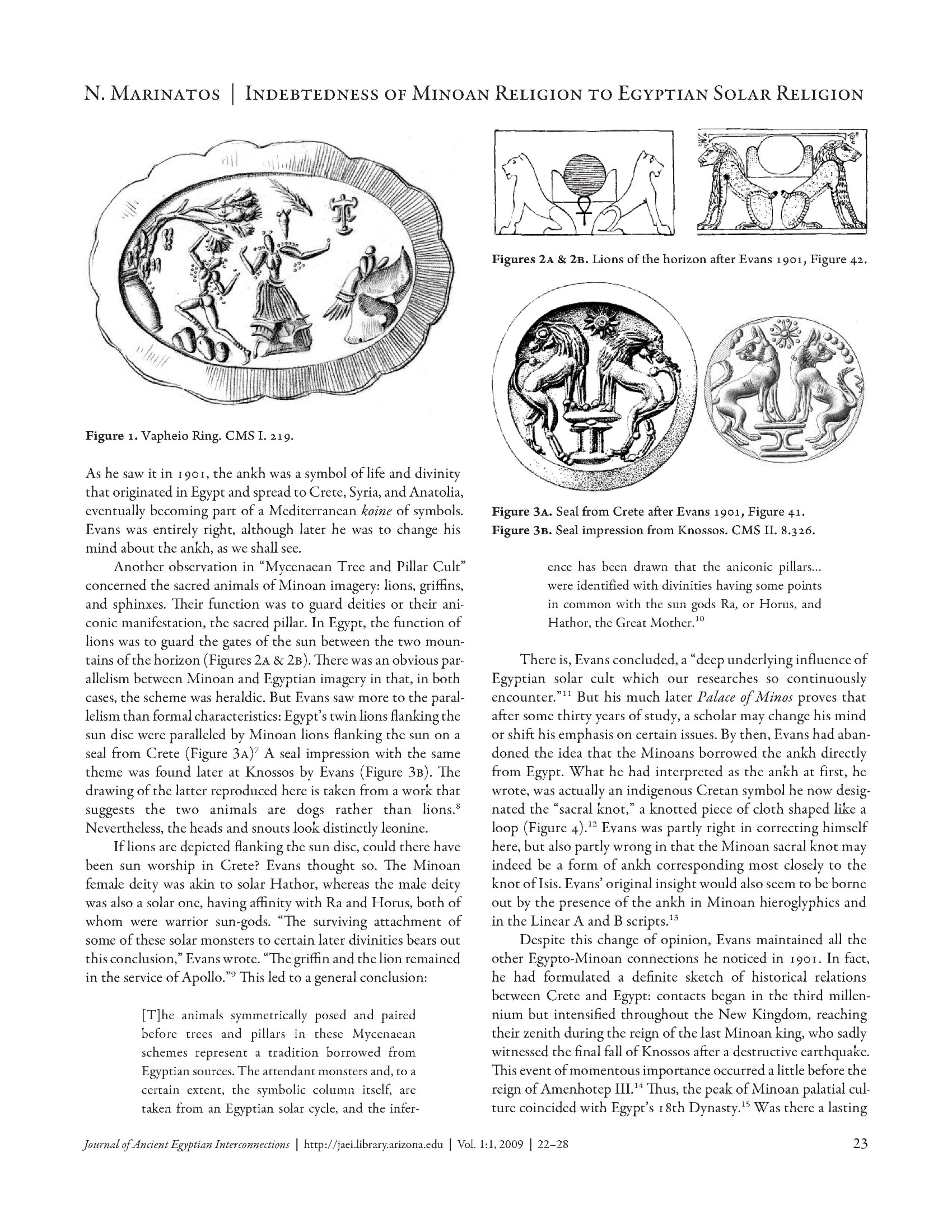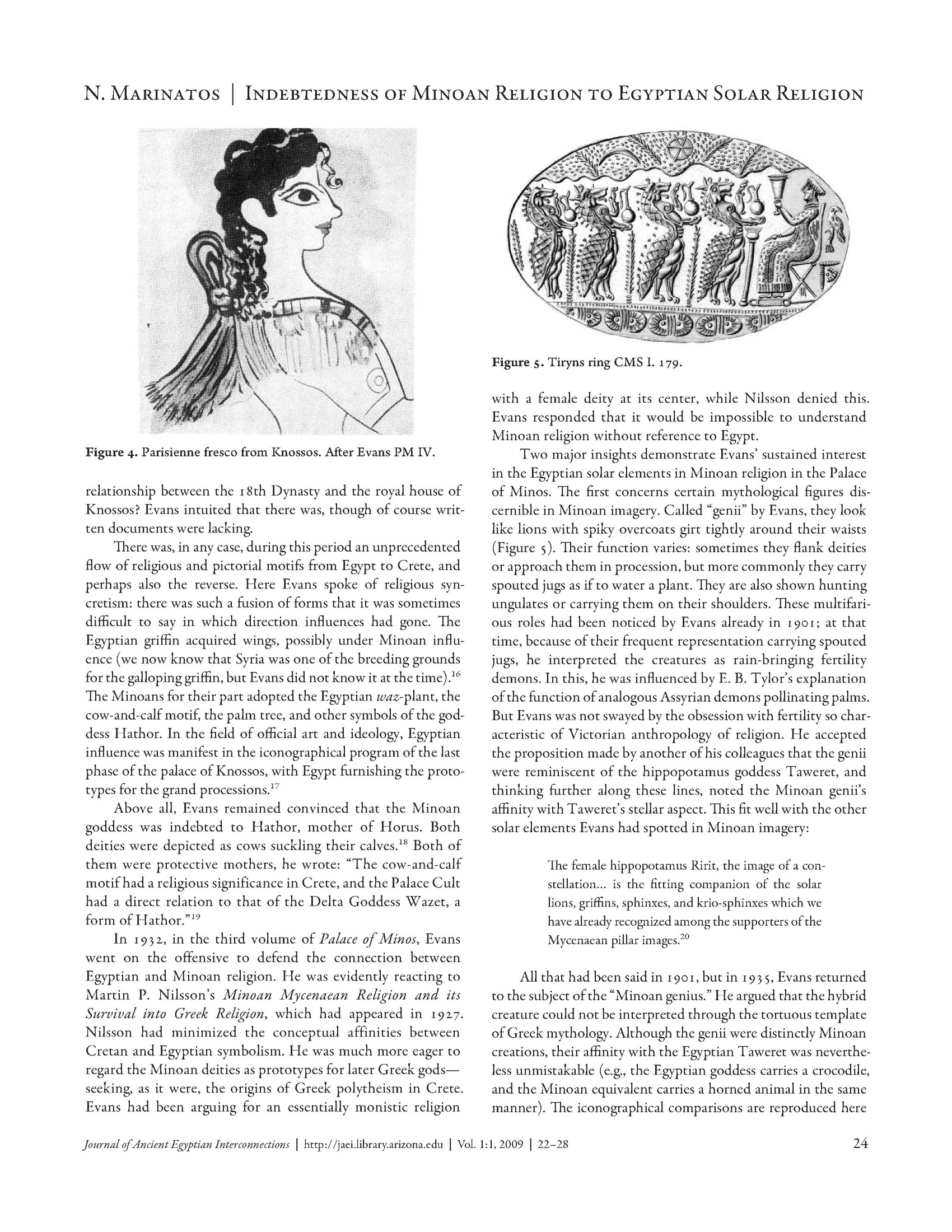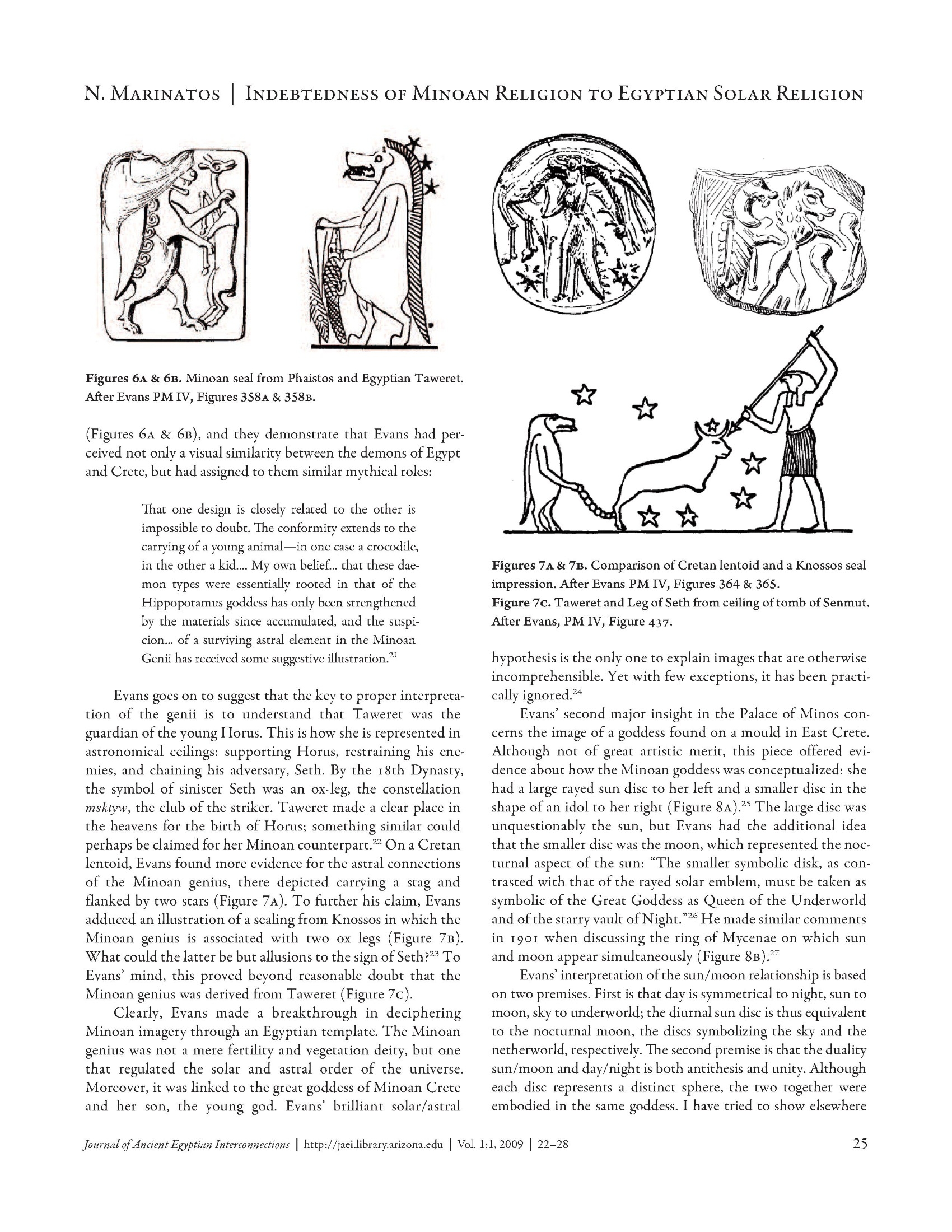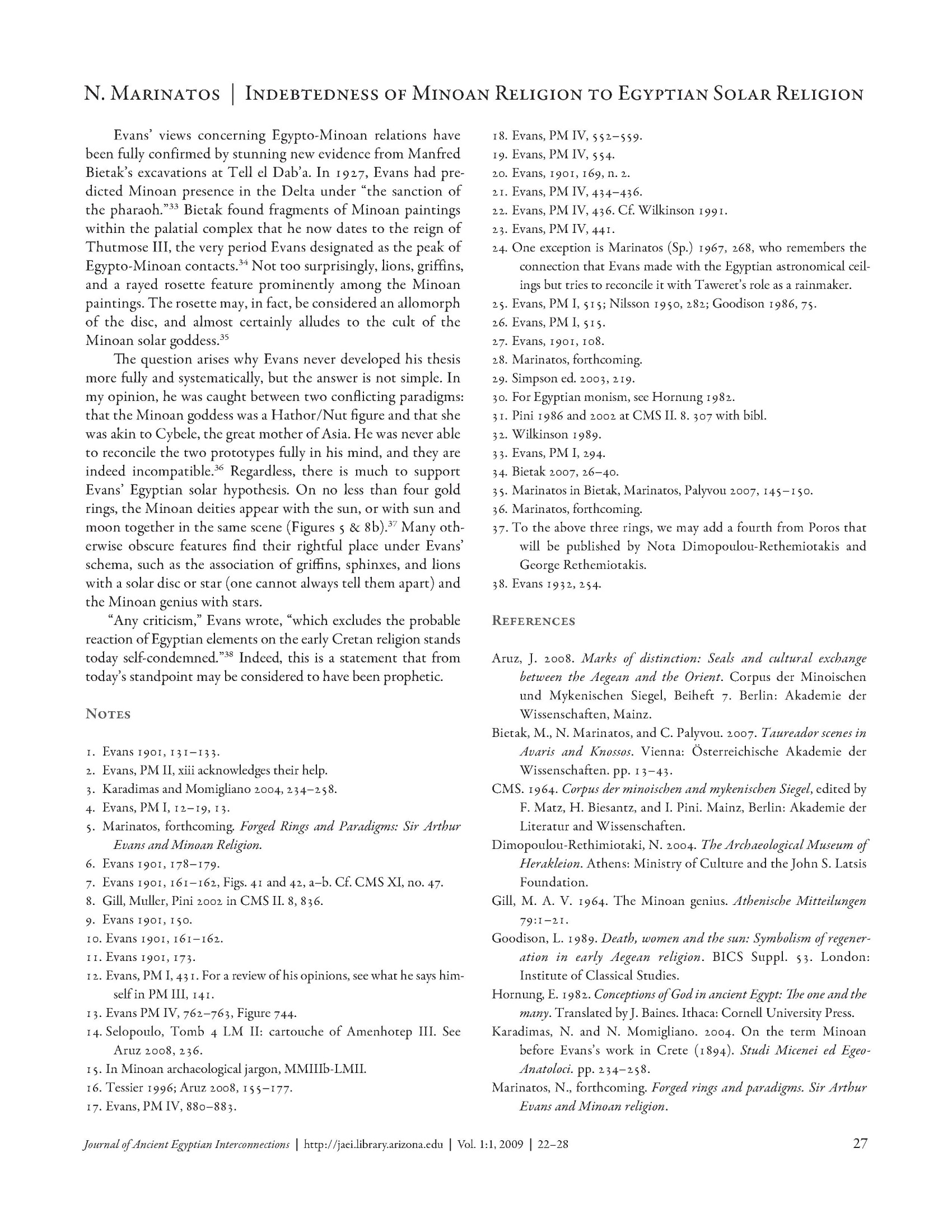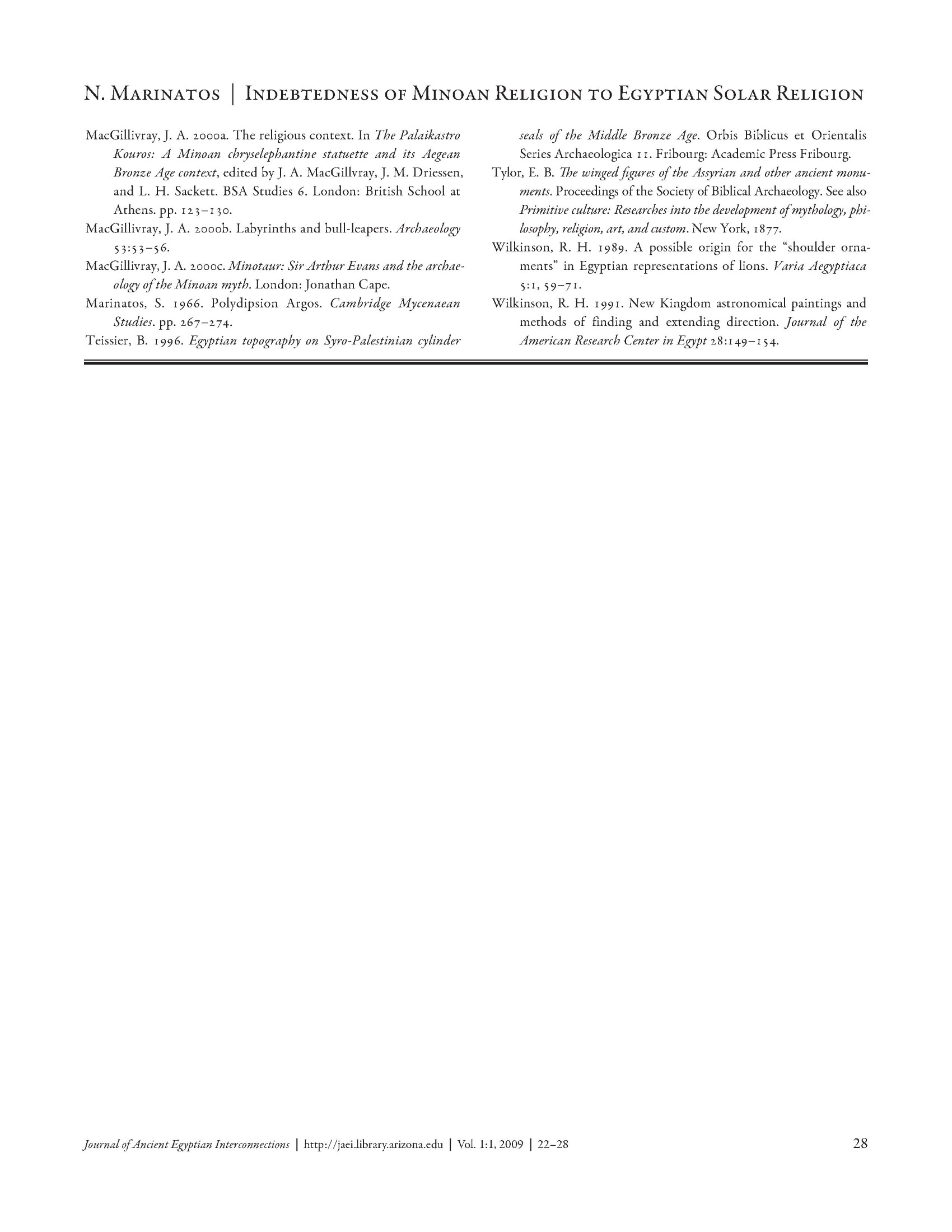About
Marinatos' 2009 article concerning Minoan culture's relationship to Egyptian solar religion argued that Sir Arthur J. Evans' early hunches were likely accurate. That is, Minoan culture adopted the Egyptian notion of a female solar deity. Marinatos, in general, has argued for the existence of a Minoan Solar Goddess, although the written record suggests that this is a proto-deity.
Source: OMNIKA
Abstract: Sir Arthur Evans believed that Minoan religion was highly indebted to Egyptian thought. He saw that the two cultures shared a solar theology expressed via similar iconographical schemes, such as the heraldic arrangement of lions on either side of a column and the astral associations of the goddess known to the Egyptians as Taweret and transmuted by the Minoans into leonine “genii.” Evans’ solar theory was not systematically developed and has scarcely been considered since. Yet it is worth reviving in view of recent finds, especially the excavations of Manfred Bietak at Tell el Dab’a, which prove that contact between the royal courts of Egypt and Crete was close indeed.
Source: Author or Publisher
expand_more Read more Read less
Access
Read for free
External sources
Primary
Myth
On Side A, the solar figure is first affirmed as the chief ruler. The author then asks for the figure to shine warmth and show its rays in order that the people can be assisted while sailing. On Side B, water is described as flowing westward to Iberia. An Iberian king's twenty daughters are described as watching (perhaps lamenting) the horizon as the sun is chased away by the other stars. Arrows are described as being shot, perhaps toward or from Sagittarius. Finally, the light drifts away to Asia and ascends again when the stars chase it back, ending the poem.
Belief system
Minoan culture refers to spiritual beliefs and customs practiced by peoples living in Crete and some Aegean islands between ca. 2800-1450 BCE.
Deity

The Minoan Solar Proto-Deity may represent the sun according to proto-myths in Linear A or Cretan Hieroglyphs. The figure may also be visible in Minoan material culture.
Translation
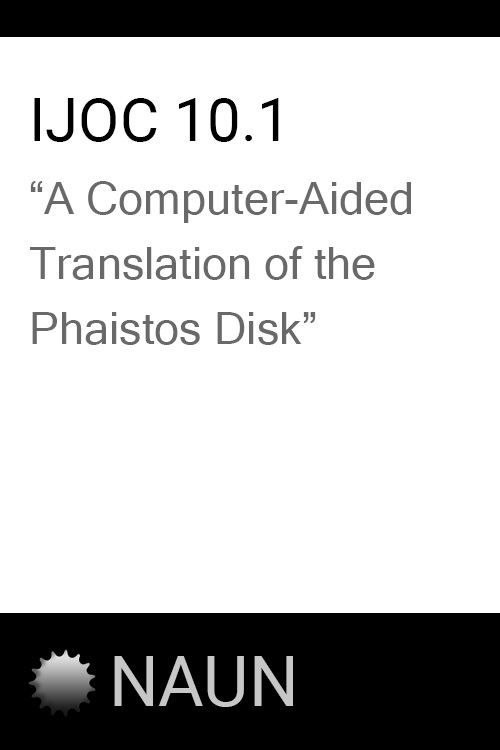
The "Minoan Sun Hymn" is an English translation of The Phaistos Disk in 2016 by Peter Z. Revesz. According to Revesz, the inscription on the Minoan artifact represents Cretan Hieroglyphs meant to be read from the inside-out. Moreover, the transliterated syllables may belong to the Proto-Hungarian or Proto-Finno-Ugric family of languages. According to Revesz's translation and transliteration, the inscription is a sun hymn, a form of proto-mythology, to a Minoan solar deity.
Myths cited
It looks like only the main myth was referenced in this work.
Belief systems cited
Other works
Journal article · 2009

Marinatos' 2009 article concerning Minoan culture's relationship to Egyptian solar religion argued that Sir Arthur J. Evans' early hunches were likely accurate. That is, Minoan culture adopted the Egyptian notion of a female solar deity. Marinatos, in general, has argued for the existence of a Minoan Solar Goddess, although the written record suggests that this is a proto-deity.
Book · 2010

Minoan Kingship by Nanno O. Marinatos treats the topic of Minoan religion. The author considered material culture from remains found in Crete (e.g., Phaistos and Knossos) in order to make the case for a 'Solar Goddess' that was allegedly worshiped.
Book · 1993

Minoan Religion by Nanno O. Marinatos provides a useful and well-documented introduction to the Minoan civilization of Crete during the Bronze Age. Her work treats the origins of Minoan religious customs, their practices, and much more.
Contributor
Cite this work
ChicagoMarinatos, Nanno O. "The Indebtedness of Minoan Religion to Egyptian Solar Religion: Was Sir Arthur Evans Right?" Journal of Ancient Egyptian Interconnections 1, no. 1 (2009): 22-28.
